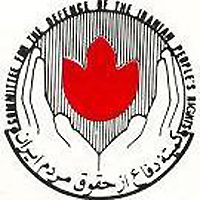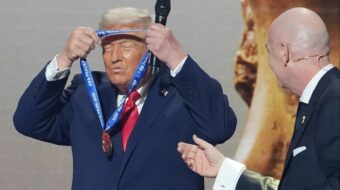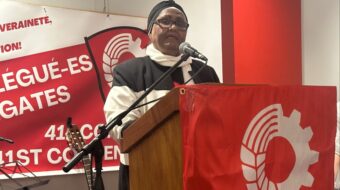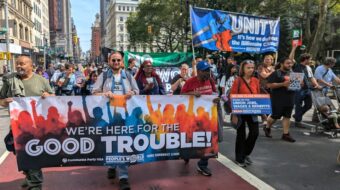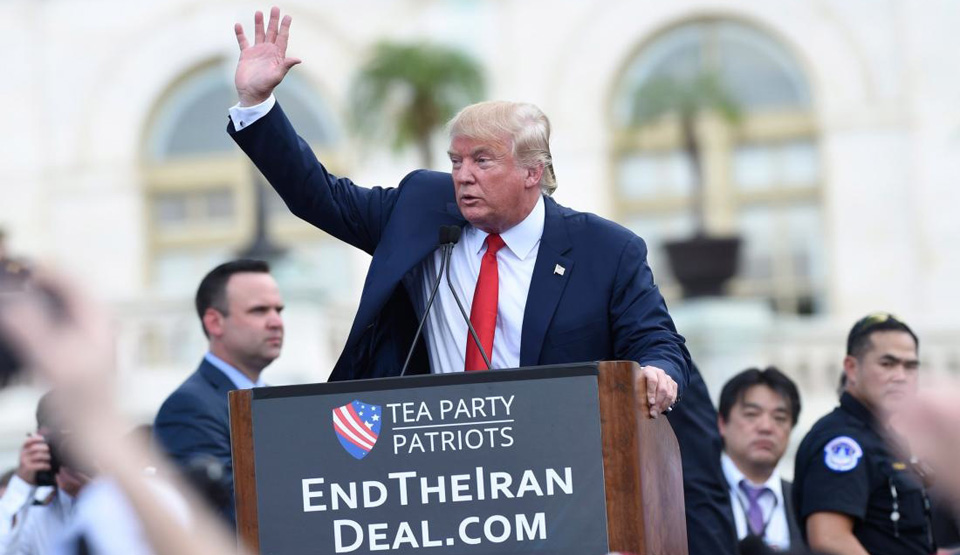
During the course of the U.S. presidential campaign, Donald Trump regularly criticized the deal arrived at by the United States and other world powers with Iran over the de-escalation of Iran’s nuclear program.
In one speech in July this year, Trump stated: “They are laughing at the stupidity of the deal we’re making on nuclear. We should double up and triple up the sanctions and have them come to us. They are making an amazing deal.”
Not wishing to let the subject lie, Trump followed this up with another statement in August which claimed that as a result of the deal, known as the Joint Comprehensive Plan of Action (JCPOA), Iran would “take over parts of the world that you wouldn’t believe. I think it’s going to lead to a nuclear holocaust.”
Ironically, this was Trump modifying his position to “police” the deal, rather than “rip it up,” which had been his earlier stance.
Trump’s position is based on his assessment of U.S. negotiators, primarily Secretary of State John Kerry, as being incompetent and on his stated belief that “Persians are great negotiators.”
While this is ostensibly a flattering statement, it is one actually based upon an age-old Western stereotype of the “not-to-be-trusted” Persian swindler.
Such an approach to international relations is consistent with the campaign trail rhetoric of Trump on a wide range of national and international issues, but it is hardly a serious assessment of how to tackle deep-seated international enmities.
Knowing Trump’s advisers and the fact that his first phone calls were to the Saudi king, the Israeli premier, the Turkish president, and the military president of Egypt in the first days after his election, it does not bode well for the prospects of peace in the Middle East and detente with Iran.
The JCPOA reduces Iran’s centrifuges – the devices used to enrich uranium gas – by two-thirds. This extends to over a year the so-called “breakout time,” that is the time it would take Iran to produce the fissile material needed to build a nuclear weapon if it wanted to.
The sanctions relief built into the deal was key to the wider strategy of the U.S. to rebuild influence in the region in order to incorporate Iran into its “New Middle East” plan.
After the imposition of sanctions, Iran was, in effect, brought to its knees and its economy completely paralyzed. Iran agreed to negotiations in order to get the sanctions removed.
From this perspective, Iran’s position in respect of the U.S. changed fundamentally. Iran was willing to play the role that the U.S. wanted it to play. For example, Iran was invited to join the negotiations on the future of Syria despite Saudi disagreement.
While there has been some suggestion that hardline conservative elements within the Iranian regime are not happy with the U.S. deal, in reality they have been instrumental in bringing it about.
The negotiations with the U.S. were planned and initiated by the hardliners during the Mahmoud Ahmadinejad presidency – two years before Iranian President Hassan Rouhani was elected.
The regime was most concerned about a possible social explosion by the poor and the disenfranchised, following the wave of protests, which swept the country after Ahmadinejad’s election in 2009.
The fact that no deal in Iran could be signed without the agreement of Supreme Leader Ayatollah Ali Khamenei also indicates that Rouhani had the green light to make the deal.
The first sign of Western investment came in November, with a preliminary $4.8 billion agreement with a consortium led by French company Total, to develop Iran’s giant South Pars natural gas field.
At a ceremony to open three new oil fields in November, Rouhani made clear his assessment of the importance of the sanctions relief stating: “This means that trapdoors have been opened and fresh air has entered. Now people will benefit from the new opportunities. The oil industry has used these opportunities in the best way it could.”
Rouhani added: “After the nuclear agreement, some said it would take ages to reach the goal of two million barrels of daily exports. They also said we cannot return to the pre-sanctions situation. But [the progress of] our oil industry in just a few months has surprised the world.”
It is estimated however that Iran requires investment in the region of $200bn over the next five years in order to bring oil and gas production up to pre-sanctions levels.
It will not be possible to achieve such levels without foreign investment. It is unlikely that the West will want such investment to come from Russia – already seen as making a play for Middle East influence by supporting President Bashar al-Assad in Syria.
The uncertainties being played out across the European Union at the moment also raise questions about where European companies may seek to invest, in spite of the recent Total commitment.
In this context, the Trump election adds to the volatility surrounding the economy in Iran and underlines the extent to which the regime is at the mercy of external factors.
At present, the ability of the Iranians to trade in U.S. dollars – vital on international energy markets – is limited. Some restrictions have been lifted following protests by the Iranian government that the constraints were not in the spirit of the JCPOA, following discussions in April this year.
However, even more significant now than it was at the time, is the stated opposition of U.S. House Speaker Paul Ryan, who opposed any moves to give Iran access to the U.S. dollar, citing concerns about what Tehran would do with any financial access gained in the wake of the Iran nuclear deal.
While such opposition could be taken more lightly with the prospect of a Hillary Clinton presidency, it takes on added weight following the U.S. election outcome.
While Trump and Ryan crossed swords during the campaign itself, there can be little doubt that – faced with the prospect of power – they will find that there is more to unite than divide them.
Future relations between the U.S. and Iran may depend upon the extent to which Trump thinks he has boxed himself in with his position on the anti-nuclear deal.
There is certainly every chance that Trump will attempt to pressure Iran into more concessions and even more direct co-operation in the Middle East.
Whether Trump will risk both policy incoherence and a major foreign policy setback – if he does not shrink from his campaign promises to trash the nuclear deal – remains to be seen.
How Trump acts on President Barack Obama’s executive orders allowing economic transactions with Iran will disclose a great deal about the course of Trump’s Iran policy.
However the politics of the Trump presidency begin to unfold, there remains the issue of the upcoming presidential election in Iran, scheduled for May 2017.
While the JCPOA has been welcomed by the self-styled reformist camp around President Rouhani, the deal is not universally applauded. However, with the main power centers in Iran behind the deal, not least Ayatollah Khamenei himself, the extent of opposition is not significant.
The impact of sanctions has already resulted in the closing down of 14,800 manufacturing or production units. The administration has even shut down many research projects. According to Hamid Haaj Esmaili, an Iranian expert on the country’s labor market, “65 per cent of workshops or production units in industrial parks have gone out of business.”
At present, there is debate in hardline conservative ranks about the benefit of fielding a strong candidate against Rouhani in the May elections.
There appears to be little advantage to opposing someone the West is prepared to accept as a “reformist” by installing a more conservative candidate, who may serve as an excuse to re-introduce sanctions.
The sanctions regime undoubtedly weakened the Iranian economy, resulting in economic uncertainty and depressed wages for many. It is clear that the lifting of sanctions will not, in itself, be sufficient to relieve the suffering of many of Iran’s workers.
Exploitation by domestic capital does not feel any different to exploitation by international capital for those at the sharp end of the economic changes in Iran.
While the human rights record of the Iranian regime has not figured in any of the negotiations leading to the JCPOA, it is nevertheless a factor inhibiting Iran’s development.
The continued imprisonment, torture, and execution of political opponents creates a climate of fear and volatility within the country which, if it becomes manifest in the form of street protests as it has in recent years, may act as a deterrent to investment.
Whatever the outcome of the election in Iran, combined with the recent U.S. election outcome, the fate of the Middle East continues to be uncertain.
Until the progressive voices of Iran and the wider region are able to make themselves heard, it will continue to be the case.


